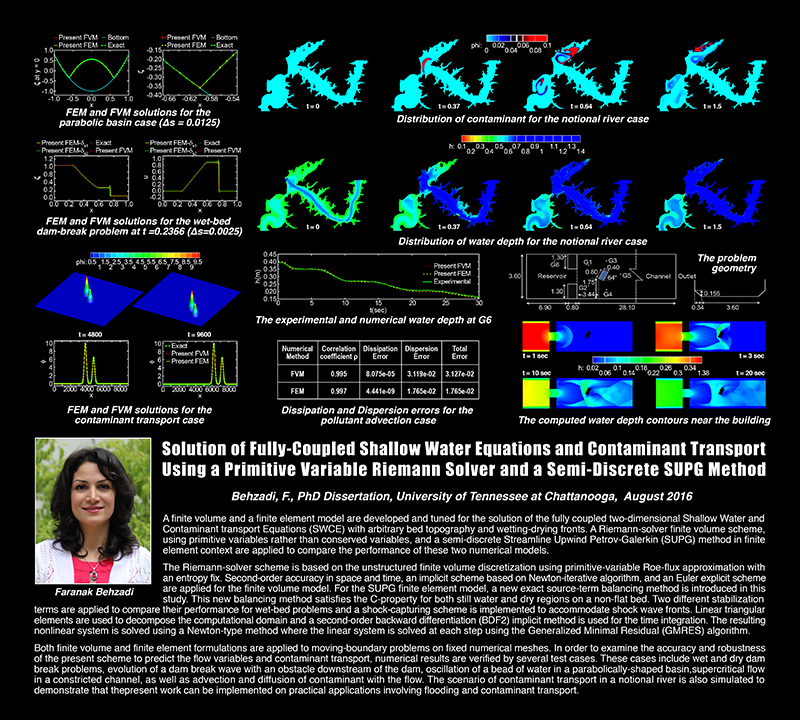Faranak Behzadi
Solution of Fully-Coupled Shallow Water Equations and Contaminant Transport Using a Primitive Variable Riemann Solver and a Semi-Discrete SUPG Method
A Dissertation Presented for the Doctor of Philosophy in Computational Engineering, The University of Tennessee at Chattanooga
Faranak Behzadi, August 2016
Abstract:
A finite volume and a finite element model are developed and tuned for the solution of the fully-coupled two-dimensional Shallow Water and Contaminant transport Equations with arbitrary bed topography and wetting-drying fronts. A Riemann-solver finite volume scheme, using primitive variables rather than conserved variables, and a semi-discrete Streamline Upwind Petrov-Galerkin (SUPG) method in finite element context are applied to compare the performance of these two numerical models.
The Riemann-solver scheme is based on the unstructured finite volume discretization using primitive-variable Roe-flux approximation with an entropy fix. Second-order accuracy in space and time, an implicit scheme based on Newton-iterative algorithm, and an Euler explicit scheme are applied for the finite volume model. For the SUPG finite element model, a new exact source-term balancing method is introduced in this study. This new balancing method satisfies the C-property for both still water and dry regions on a non-flat bed. Two different stabilization terms are applied to compare their performance for wet-bed problems and a shock-capturing scheme is implemented to accommodate shock wave fronts. Linear triangular elements are used to decompose the computational domain and a second-order backward differentiation (BDF2) implicit method is used for the time integration. The resulting nonlinear system is solved using a Newton-type method where the linear system is solved at each step using the Generalized Minimal Residual (GMRES) algorithm.
Both finite volume and finite element formulations are applied to moving-boundary problems on fixed numerical meshes. In order to examine the accuracy and robustness of the present scheme to predict the flow variables and contaminant transport, numerical results are verified by several test cases. These cases include wet and dry dam break problems, evolution of a dam break wave with an obstacle downstream of the dam, oscillation of a bead of water in a parabolically-shaped basin, supercritical flow in a constricted channel, as well as advection and diffusion of contaminant with the flow. The scenario of contaminant transport in a notional river is also simulated to demonstrate that the present work can be implemented on practical applications involving flooding and contaminant transport.
Click here to access a copy of Faranak's dissertation.
